#in my heavens arena arc era
Explore tagged Tumblr posts
Text
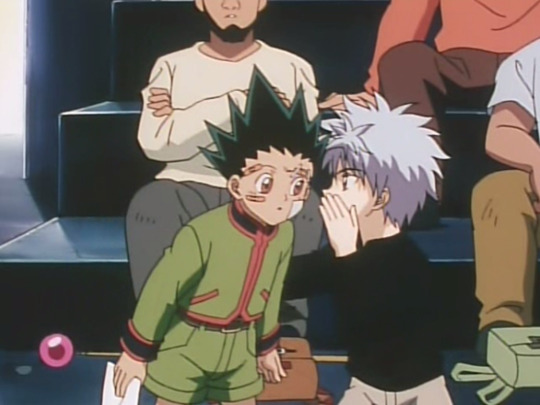

175 notes
·
View notes
Text
Hunter x Hunter ships I personally don’t like
These are ships that are NOT supported on my page.
Edit: I have left my hater era… while I do not like these ships myself I won’t shame you for liking the legal ones. I am no longer present in ship discourse. I do not like these but I won’t stop others from enjoying them…. With that said please enjoy the LONG ass read.
Please note a couple things before reading.
1, I do not hate any ships for being WLW, MLM or NL (hetero) unless it’s the result of representation erasure (An example of this is in the Owl House Community. People ship Lunter and say that it’s ok because Luz is a canon Bisexual but it’s still WLW relationship erasure!!! I do not support Lunter btw…)
2, I’m gonna mention stuff like proshipping and toxic relationships so please be warned if you’re triggered by those types of things do not read under the cut
3, I’m also gonna talk about ships I lovehate due to having extremely mixed opinions.
Alright that’s all!! Enjoy your reading and please remember to respect my opinions and interpretations of the characters. This will also include spoilers for the entire animated series.
Killunary (Killua x Canary)

There are a couple reasons why I don’t like this ship but it’s mostly because of the power imbalance. Certain employee x employer ships just don’t work due to extreme power imbalance. The main example of this is the Zoldyck family and their abusive nature towards all the butlers, including how Kikyo treats Canary when she got close to Killua.
The other reason is because I see Killua as a heavily MLM coded character. And I’m sorry if you don’t agree but based on both his canon and non-canon interactions with the various women of the story, I don’t think he’s straight. I personally think he might be gay/vincian but it’s up to interpretation!! I cannot see Killua dating a girl. (This includes ships like KilluRetz and Killumane)
Hisomachi (Hisoka x Machi)
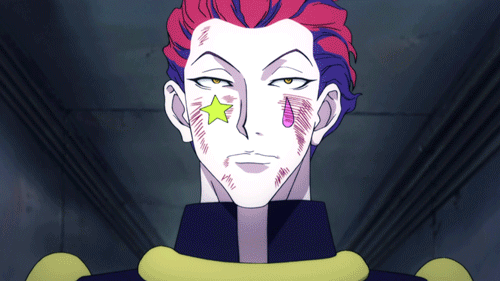
Again, Hisoka is a heavily MLM coded character with Machi being the only woman in the series he’s shown possibly romantic interest in. Hisoka himself is an extremely harmful stereotype of a gay man being overly flamboyant but also predatory towards kids and women. That is a stereotype that is shown and pushed VERY often with Hisoka. (If you do view Machi as WLW, which I do, she’s also a harmful stereotype of the mean, man hating, lesbian./lh)
Also the fact that Machi straight up rejected his dinner offer in the Heaven’s Arena Arc should be enough to push the fact that she doesn’t like him…
Edit: while Hisoka is MLM coded I personally see him as a pan man due to some random factors and just cuz I like it that way
Kuroneon (Chrollo/Kuroro x Neon)
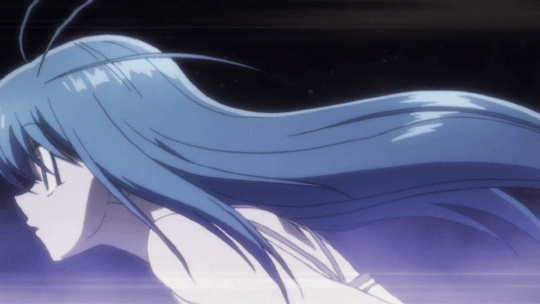
Ok I only have like one reason but I feel like it’s validated tbh!!! He literally attacked her and stole her ability. And I don’t wanna go on a whole rant about Neon and her complexities rn but her nen ability, lovely ghostwriter, was essentially the only reason for her father to love her and care the way he did…
Also their age difference urks me ALOT cuz Neon is about the same age as Kurapika (17-19) and Chrollo is pushin 30… T-T
Kurokura (Chrollo/Kuroro x Kurapika)

A lot of people ship them because “lol omg enemies to lovers!!” But like. This isn’t that kind of enemies to lovers hun… :// Chrollo and the troupe literally massacred the Kurta Clan with zero mercy and left Kurapika alone and almost defenseless in an unfamiliar world. He destroyed everything Kurapika had. That’s not something Kurapika would or will forgive easily. Kurapika is literally destroying himself inside out because of what the troupe did to the Kurta Clan. This ship is just ugh it’s so toxic I hate >:(
Also again, even if Chrollo didn’t destroy the Kurta Clan, age difference. Kurapika’s the same age as Neon (17-19) and Chrollo is PUSHING 30!!!!! Icky!!!
Tbh this goes for any of the Troupe x Kurapika… gross age difference and disgusting enemies to lovers dynamic.
Pitokai (Neferpitou x Kite/Kaito)

One of my biggest icks ever is Victim x Killer because like how would YOU feel if you were violently murdered for seemingly no reason and then find out that there are people out there who think you and your killer would be cute if you dated O.O
Yeah it’s like… really toxic. I don’t have the energy to go into all the details of it but Killer x Victim has no reason to be as popular as it is…
Wisky (Wing x Bisky)

(I couldn’t find any GIFs of them from the movie so you get this still image)
Teacher x Student dynamics really ick me as well… in most but not all cases the teacher is somewhat of a parental figure and the student is very young, in most cases a minor!!! We don’t exactly know if Wing was a kid when Bisky taught him nen since she refers to most people younger then as kids but the idea that she was extremely influential in his earlier years and has that older adult figure role in his life makes the idea of shipping them just.. it makes my skin crawl tbh ^^|||
Also there’s a HUGE age difference with Bisky being 57 and Wing being in his early 20s.
Gingkite (Ging x Kite/Kaito)
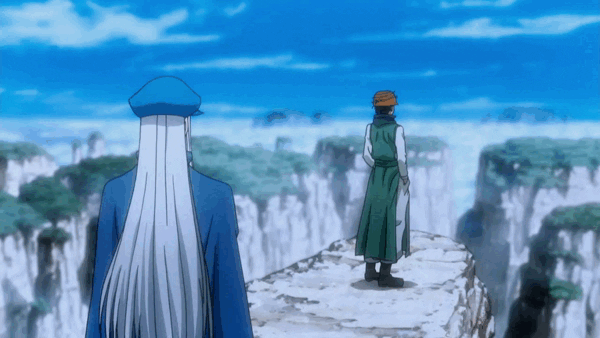
Again w the teacher x student guys… the same reasons as with Wisky expect we know for a fact that Ging met and started training Kite when he was a teenager! Makes this extra icky.
Again with the age difference! Ging is in his 30s I think maybe 40s? And Kite is in his early 20s. Pretty big age gap!!!
Any incestous Zoldyck ships

The fact that I even have to state this… dude… c’mon…. Incest is NOT cool chat!!
Any ships between the siblings? DISGUSTING!!
Between the kids and the parents? GRODY!!
Between Zeno and his grandkids? OUTRAGEOUS!!
This isn’t even just limited to the Zoldyck family dude… Mito x Ging is a thing apparently…
Any Child x Adult
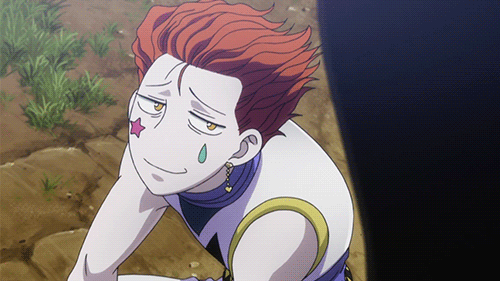
Again… why do I need to state this… shipping adults x children is WEIRD!!! And NOT OK!!!
Hisoka x Gon? GROSS!!
Killua x Illumi? DOUBLE GROSS!! INCEST IS ALSO NOT OK.
Killua x Machi? STILL GROSS!!!!
Please if you ship canon children with adults… please… just get off my page :^
Merupouf (Meruem x Shaiapouf)
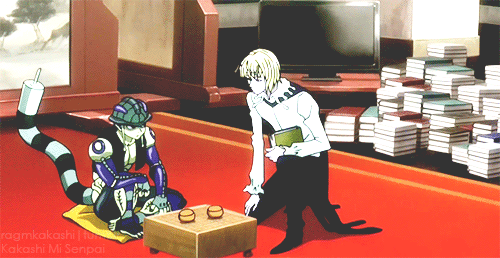
Gonna be so fr w you guys… I used to ship this… i thought they were funny :’) I’VE RECOVERED DW!!! (/lh)
Uh yeah so the power dynamic is really erm!!! /neg I genuinely cannot go into detail about how toxic they are but I’ll try to summarize… Pouf has like a perfected version of Meruem in his head as the king but when Meruem starts to change for the better he rejects it and thinks he knows what’s best for the king and shit!!! Also Meruem treats his Royal guards like shit (at the beginning) their relationship gets only slightly better towards the end but it’s still abusive!!!
Also my friend pointed out that the Royal guards exist solely for Meruem. Like they are Meruem and Meruem only. Everything is for him and that adds like a super fucked up dynamic to this ship…
Also forgot to mention earlier, ANTCEST. All the chimera ants came from the same mom so shipping them is really weird even if they don’t all see eachother as siblings
—
Ok so that’s all I can think of rn… please try to understand that this is MY interpretation and perception of these characters. It is ok if this is not how you see these characters, but it is how I see them.
#hxh#hunter x hunter#ships#killua zoldyck#canary hxh#machi komacine#hisoka morow#chrollo lucilfer#kuroro#neon nostrade#kurapika#kite hxh#kaito hxh#neferpitou#ging freecss#wing hxh#bisky krueger#zoldyck family#shaiapouf#meruem
83 notes
·
View notes
Text
Arc Plays Games: Nayuta no Kiseki
listen i just really like fan translated games, okay
so I've been playing what i think is a side-game to the Trails In the Sky sprawling megaseries of games, Nayuta no Kiseki. It's a PSP game that was translated by fans before an official translation came to the Switch. PSP/PS Vita and DS/3DS are my favorite game libraries right now by a whole lot.
And man I really liked this game.


It's an action RPG from the era before spectacle action became de riguer. It looks really lovely and painterly at 5x resolution on my Odin.
Basic pitch is this kid, Nayuta, is coming home for summer vacation from his time studying in university. He lives in a world that seems to be an actual Flat Earth and beyond the known boundaries is the literal End of the World, and it's vaguely common knowledge that the End is closer than its not, and a major apocalypse may happen.
The game establishes all that, then is like "here is your hometown on Remnant Island! gosh its so pretty and sunny!"


In the first hour of the game, Nayuta and his buddy Cygna stumble into another world that the locals call Terra but mythologically seems to be Lost Heaven to Nayuta's people. He misplaces his best friend Cygna but gains the fairy Noi, and Nayuta and Noi have to work together to save Terra and find Cygna.
The thing I enjoyed about the game was the gameplay loop, which is immaculately tuned. This is, to me, a Cozy Game, but I say that with the caveat that I'm allergic to what most ppl call Cozy Games these days.
The loop goes like this.


The areas of Terra are separated into medium-sized levels that take about 5 to 10 minutes to complete, tops. Each level, you run around swinging your sword, solving v basic puzzles, and using magic with Noi.
The tastiest part is that each level has a little objective for you to do to get star points that can be used back on Remnant Island. There's also money and museum items to locate.

When you collect a bunch of stuff, you go back to Remnant Island. You trade in your star points to the local swordmaster to unlock new abilities. You drop off your stuff at the local museum to get more money. And you spend money on new equipment.
You can also stop by your house to pick up lunchboxes from your older sister, and every meal is different and has special bonuses and buffs.
While at the Island, Nayuta has this job as a Handyman, so everyone on the island leaves request letters in his mailbox for him to do menial quests for them. Often, you have to help people around the island, but sometimes you need to use the other world to solve problems.
Example: the attendant at the blacksmithy wanted new fruit to make into alcohol, so she gave Nayuta a seed for a peach tree. Back in Terra, Nayuta can plant the seed then use plot magic to change the seasons and get the fully grown peach.
The game just feeds into itself really well. You get quests that lead you back to the battle stages that lead you to collect stuff that leads you back to the questgiver and helps you gear up better over time.
I've put about 17 hours in, I think? And at this point I'm happy setting it aside as not completed but done. I'm close to the ending of the game, but the plot is focusing more and more on characters that had not grabbed me in any way, so I'm having trouble staying invested in the story.

(This is another fairy creature, I love his design)
But if the game was just the main loop of island quests to battle arenas and back, I'd play it for another ten hours. It's good! Solidly 6 or 7 out of 10.
Now I want, like, the same game but better writing.
#arc plays games#anyway this game is very very easy to find if you know the site to look at#which i do so hmu
15 notes
·
View notes
Text
OPINION: Why Yoshihiro Togashi Is My Favorite Manga Creator

I know the title of this thing is "Why Yoshihiro Togashi Is My Favorite Manga Creator" and that's technically correct, but it doesn't fully cover the scope of my admiration for the creator of series like Yu Yu Hakusho, Level E and Hunter x Hunter. He's one of my favorite creators in all of fiction, the kind of writer and artist I'm honestly in awe of. Togashi has a way of not only reinventing the genres he works with but our expectations of him. He keeps you on your toes that way, and even within the span of certain series, he changes and refocuses to the extent that, on an arc by arc basis, you're given a new perspective on the narrative.
Perhaps my favorite example of this is in Yu Yu Hakusho, my favorite anime. The way the manga evolved from comedy and supernatural hijinks to dark fantasy to fighting tournament chaos is well-documented, but Togashi takes it a step further. Each new story arc shines more light on the previous one. The Chapter Black arc, in which Yusuke and the gang take on Shinobu Sensui, an ex Spirit Detective who decries humanity's brutality against the demon world, forces you to rethink every action and every victory against the demon antagonists that came before. The same thing occurs when Yusuke is revealed to be at least partly a demon, something that forces you to investigate the grey areas between will and predestination.

These kinds of things overhaul the story on a thematic and a genre level. Hunter x Hunter is renowned for its dissatisfaction with the tropes that often come common with its peers. Each new arc, based generally around discovery and games, is a chance for Togashi to test himself as he attempts to build a new system of not just rules, but tension in the story. It's a risky effort — the kind of thing you watch the Heaven's Arena arc for ends up being different than what you'd pick out the Chimera Ant arc for. But it works out thanks to Togashi's appetite for exploration. Every new effort is his own new world, his own "Dark Continent Expedition."
Togashi has been doing this his entire career. He got his start in comedy and romance manga before diving into Yu Yu Hakusho, a series that became a pillar of Weekly Shonen Jump's explosive popular era in the early '90s. Afterward, he'd create Level E, a science fiction manga that balanced Togashi's creativity for crafting capable fantasy worlds with his penchant for humor. Comedy is a perennially underrated aspect of Togashi's writing toolbox, despite his constant use of it. Many of his characters have a sense of humaneness, of blunder and hubris and devotion, that gives them a funny relatability. From Kuwabara's brand of youthful machismo to Gon and Killua's childlike reception to parts of an ever-strident world, they turn what could be complicated lore into personally accessible adventures. No matter how intricate a structure becomes, Togashi's sense of pathos, a deeper current of everyone, from Kurama to Toguro to Leorio to Meruem having things that they want and things you can pity about them, turns these sprawling works into journeys that are ultimately moving.

Finally, Togashi's worlds and characters are a visual dream, the kind of thing tailor-made for anime adaptation. There are bits of Togashi's series that are unforgettably horrific and beautiful — the first time we see Toguro's malformed body, a mix of muscle and monstrosity as he raises his power to its highest level, will stick with me for the rest of my life. When put on screen and imbued with the moving energy of animation, they provide an expert blend of the macabre and the magical. It's here that his drive for reinvention is most evident. As stories move on and body types and species change and depart, audiences are forced to keep up. It's a thrilling exercise, the kind of thing we get all too rarely when authors decide to play it safe. But Togashi seems to respect his audience and their capability for wonder.
So he's pushed forward, delivering series after series that I hold near and dear. The stories Togashi has devised are eternally ripe for enjoyment, inspection and revisitation. A once-in-a-lifetime creative force, we are blessed to have been granted his many worlds.

Daniel Dockery is a Senior Staff Writer for Crunchyroll. Follow him on Twitter!
By: Daniel Dockery
2 notes
·
View notes
Photo

(via The best kinds of leaders focus on the collective, not the individual — Quartz at Work)
By Nora Bateson
In this era of multiple crises and global threats, I am increasingly uneasy with the call for leadership. Gandhi, Martin Luther King, Rachel Carson, and other iconic figures are held up as examples of true leaders: They offered charisma, vision and strength enough to pioneer new eras of thought. The lack of such characters now, we are told, suggests a vacuum in our capacity to generate the old-school kind of hope for the future that these courageous individuals embodied.
So where are the leaders of today? This is the question plaintively asked of today’s activists, scientists, politicians, and keepers of the moral fabric.
I would like a moment to call bullshit. This thinking about leadership is not useful. There is no such thing as an isolated individual—we are all interdependent. Period.
Our evolution is only in our mutual contribution and learning. Mutual leadership is an evolving process and, as such, our understanding of what leadership is must evolve in accordance. In the past the world understood leadership as the great deeds of heroes; now we are in another phase of global transition that requires an understanding of leadership based on our understanding of interdependency.
Is there a part of any of us that we can point to and truly say, “that is me—untouched or influenced by any of my history, my culture, education, family, religion, social life…”? Unlikely. Perhaps, instead, leadership is a product of the context, combined with other influences that seem to culminate in crowning an individual with leadership duties. When we look through the lens of interdependency, it is impossible to separate individuals from their contexts of influence and experience. This blurs the ‘hero’s story.’ Leadership, then, can better be attributed to the town or village that nourished a person than to that person’s individual qualities.
In ecological terms we can attribute the health and vitality of the whale to the ocean not only to the whale, and we can attribute the strength of the lion to the jungle (or savannah) not only to the lion. The environment in which the alchemy of collective need is met with a corresponding alchemical combination of possibility produces new paths to follow. In the combination of community and individual, hardship and support, isolation and belonging, past and future, vision and discipline, there can arise a perfect storm that produces what we have, in the past, called leaders.
The very word “leadership” has become cringe worthy. It reeks of colonialism and lopsided history-book listings of individuals successful in taking, making, and claiming. Celebrating the potency of the individual is an insatiable ghost haunting the endless array of courses and manuals for developing leaders. Our fatal flaw may be the idea that an individual or institution can single-handedly penetrate new frontiers of possibility.
How can “leaders” exist without all the relationships that have culminated and fermented to make them?
This is an obsolete but undead dream of heroes and rescuers pioneering innovations. Lightning bolts of imagination and strength, these so-called leaders are presented as utterly independent of their histories; as though they had fallen from the sky. The haunting seeps into what we call ambition, fueled by our wanting to be important and successful.
There are scissors somewhere that slice the ambitious from their comprehension of the mutuality we all inevitably live within. The mutuality is where the imagination is brewing, where the strength is made, where the integrity of the context lies. Can we extract a stand-out entity from that mutuality and call it a break-away? Isn’t the break-away a product of the mutuality? How can “leaders” exist without all the relationships that have culminated and fermented to make them? Should we not point to those mutualities as heroic?
So I don’t want a leader. I am sick of heroes. I look back at how we got where we are now and I wonder what kind of systemic imbalances have been created by the thinking that longs to canonize leaders. What is a leader in a complex system anyway? What is the ecology of leadership?
I think there isn’t one. When we look to nature for models, we find that there is not an ecology that would accommodate the existing model of leadership. Think of trees in a forest. How did the “leaders” get so tall? Were they extra courageous or charismatic?
Even if that person has perfect “leadership skills”—they still disrupt the ecology with individualism.
The ecological response would observe that the other organisms mutually contributed to that growth. The ”‘king of the jungle” is human nonsense that understands nothing of the lion’s relationships in the ever-changing natural order of the many species that extend into the pride of lions. The alpha dog is seen as the “leader of the pack,” presuming that the pack ends with the grouping of dogs, which it does not. The human construct of leadership is projected onto the pack by us who are in the habit of identifying that pattern. Dogs have no such framing. Pack members are in communication and mutual learning with each other and the wider surroundings, responding to information that is funneled through the “alpha” but generated through the pack. This makes the “relationship of dominance” perceived, contextual, and not fixed. What we see as deference is a collaborative, communicational relationship that can be disrupted if the “leader” or the “followers” reorganize the communication.
In fact, I think our notions of leadership are toxic to the ecology of communication and collaboration in a social system. How can there be real communication when there is deference to a leader? This imbalance creates a hold-back of contribution and interaction. Look now at the fascination with celebrity that has infected the globe. The imbalance in the possibility for communication when one individual is placed above others in this way effectively destroys the possibility of true cooperation and mutual learning.
Mutual learning is only possible when all participants are willing to be wrong… willing to learn, to explore new ideas, to go off the map, out of the known, and together grope in the shadowy corners of new ideas, new plans, new territories. That cannot happen if one person is the know-it-all. Even if that person has perfect “leadership skills”—they still disrupt the ecology with individualism. “Leadership” often creates competition, ambition, greed and, on the flip side, fosters deference, hopelessness, apathy, and blame.
We may learn more about leadership if we study it as an entrustment of context, and not as a twinkle bestowed upon a few select individuals from the heavens above. To trust the context requires a second order shift in purposing our agendas. Instead of being activists for this or that cause, we need to tend to the contextual capacity for those changes we would like to see.
Leadership is produced collectively in the community, not the individual.
The notion of the individual entity having agency is confused by a paradox. The confusion lies with the idea of individuation. The entity (organism, person, or organization) is bound to its unique perspective or epistemology, and in that sense is identifiable as a separate source of responsibility. But, there is no aspect of that entity that is uninfluenced, uninformed, or unbound to the larger contextual interactions. On closer examination we begin to see that agency is diffused into the larger contextual processes that are shared by the entire community. Agency is a paradoxical product of mutual learning within and between people, nature, and culture.
Leadership does not reside in a person but in an arena that can be occupied by offerings of specific wisdom to the needs of the community. So leadership is produced collectively in the community, not the individual. The individual’s responsibility is to be ready and willing to show up, serve, and then, most importantly, stand back. Leadership for this era is not a role or a set of traits; it’s a zone of interrelational process. Step in, step out.
Maybe there was a time when these notions of leadership were useful—but not any more. This global whirl of interrelations and interlocked histories and futures is not waiting for leaders… it’s waiting for the courage to trust each other and to step carefully into the “intentional community » of the 7 billion people we share the commune of life with. This is our tribe. Just the 7 billion of us… and the animals, plants and micro-organisms. Those who came before, and those who will follow. That’s all.
So, am I saying that there is no room for teachers? That there is no room for the expert? No. But a good teacher, and a real expert, knows that they are in a process of learning themselves. They are not leaders. They are not making the seeds grow… They are fertilizer, tending to the soil.
By definition, leadership is needed when something has to be done that has never been done before. Meeting unknown circumstances requires rapid and spontaneous learning. In the case of today’s leadership needs, that learning is mutual.
This is an edited excerpt from Nora Bateson’s Small Arc of Larger Circles, published by Triarchy Press, UK.
This article is part of Quartz Ideas, our home for bold arguments and big thinkers.
[Entire post — click on the title link to read it at Quartz.]
#LeadershipEcology#EcologyOfLeadership#leadership#leaders#toxicleadership#opinion#oped#norabateson#interdependence#collaboration#complexity
0 notes
Text
IN-DEPTH: How Did Demon Slayer: Kimetsu no Yaiba Become Japan’s Hottest Domestic Franchise?

At this point, it’s safe to say that Demon Slayer: Kimetsu no Yaiba is one of the biggest franchises this decade. The manga series sold more than double what One Piece did at its peak in 2020, the Mugen Train anime film has outgrossed Hayao Miyazaki’s Academy Award-winning Spirited Away to become the king of the Japanese box office, and the franchise is estimated to bring in 270 billion yen to the Japanese economy by itself this year.
Looking at all of that, there is no question that Demon Slayer is the hottest domestic property in Japan right now. But how did it get here? Let’s examine how the little manga series from new author Koyoharu Gotouge became a cultural phenomenon in Japan.
Demon Slayer’s History with Jump
Before the Demon Slayer anime started, the series was running in Weekly Shonen Jump, one of Japan’s top manga magazines. The series started in Jump on February 15, 2016, and had modest success, with around 3.5 million copies of the manga series printed and sold as of February 2019, just a few months before the anime premiered in April 2019.
During Jump Festa 2017 — an annual exhibition for series being released by Shueisha in Weekly Shonen Jump and their other manga magazines — the first chapter of Demon Slayer was given out in a sample booklet alongside other new series that had started in 2016, such as THE PROMISED NEVERLAND. Outside that sample booklet though, Demon Slayer barely existed in the mind’s eyes of attendees, with gazes glued to NEVERLAND and BORUTO as the new hot series.
It wasn’t until Jump Festa 2020 (held in December 2019) that Demon Slayer got some time in the spotlight, with the Aniplex booth doing its best at showing off the series that had become such a hit over the previous summer.

Demon Slayer at the Aniplex booth during Jump Festa 2020 (photo: Daryl Harding)
Even though the collected manga volumes weren’t selling as much as one might expect from the now behemoth of a series, Demon Slayer was slowly gaining traction among fans, but wouldn’t really break out until just before the first episode of the TV anime aired on television in Japan.
The Outside Influences Brought into Demon Slayer
When the Demon Slayer TV anime was announced in June 2018, it was revealed that the studio Ufotable would be adapting the series. The Aniplex-affiliated studio is widely praised for their work on the Fate franchise, which has culminated with the Fate/stay night [Heaven’s Feel] film series. Ufotable-produced works are known to already be event-type series, and with Demon Slayer being their first Weekly Shonen Jump adaptation, it was a series to look forward to on that point alone.

First Demon Slayer TV anime key visual (source: Anime Eiga)
Just before the series premiered in April 2019, it was also revealed that popular singer LiSA — who was then mostly known for her work on the Sword Art Online openings, including the wildly popular theme to the Ordinal Scale anime film “Catch the Moment” — would be singing the opening theme for the series, with the first preview of the song at Anime Japan that year. LiSA went on to have a solo concert at the Yokohama Arena on the last days of the Heisei era in April 2019, selling out the 17,000 capacity hall.
youtube
AnimeJapan 2019 Trailer
Music can be a huge element in propelling the popularity of a series in Japan. Some of the biggest anime over the last decade was supported by their opening and ending themes, which kept the anime in people's minds. Demon Slayer’s opening theme “Gurenge” became such a hit in its own right that it dragged the rest of the series along with it. This formula worked to bring Your Name to the forefront of Japanese pop culture in 2016 — you couldn’t go anywhere in Tokyo without hearing Radwimps. And the double whammy of “Gurenge” and “Homura” (the theme for Demon Slayer: Mugen Train) has helped the series achieve even more success.
Rounding out the series was the star-studded voice cast who all have their own fan bases. Voicing Tanjiro is Natsuki Hanae, who was best known at the time for Ken Kaneki in Tokyo Ghoul; Zenitsu is voiced by Hiro Shimono, who voices Connie in Attack on Titan, and the boar himself Inosuke is voiced by Yoshitsugu Matsuoka, who voices Kirito in Sword Art Online. Nezuko's voice actor Akari Kito, who largely played side characters up until her casting in Demon Slayer, would become a well-known name and go on to play many more lead roles after the series became popular.
On paper, the breadth of talent involved in Demon Slayer far exceeded that of just any TV anime series. The production committee, led by Aniplex, was banking hard on people giving the series a try before the first episode had even aired. And it worked.
Topping the Film Charts before the First Episode Even Aired
Demon Slayer: Mugen Train has topped the film charts since it first premiered on October 18, 2020, but it’s not the first time the series has been in theaters. Prior to the TV airing of the first episode on April 6, 2019, the first five episodes were shown in eleven theaters across Japan starting on March 29. The screenings were dubbed “The Bonds Between Brother and Sister” and topped the mini-theater rankings, with over 10,000 people going in just the first three days.
Ironically the press release from Aniplex announcing that the screenings were being extended in early 2019 said the “excitement for Demon Slayer is at its peak!” If those screenings were anything on the mountain of the popularity of Demon Slayer, they’d be right near the start of the trek.

“The Bonds Between Brother and Sister” Visual
Due to the immense popularity, the two-week special screenings were then extended for another week at all eleven cinemas, which were coming in at Number 1 on the mini-theater rankings (for screenings in less than 30) for the two weeks it was originally scheduled for.
It’s no surprise then that just after these screenings had finished, and during the early broadcast of the anime on TV, that the production committee ordered the Mugen Train arc — which directly follows after the ending of the first season — to be produced as a film, according to industry sources.
Demon Slayer’s Evolving Popularity Throughout Its Airing
Hiroyuki Nakano, the editor-in-chief of Weekly Shonen Jump, spoke to Nikkei Entertainment in the March 2020 issue of the magazine on the slow success of the manga series, explaining that “normally the number of sales of a series increases gradually during the broadcast, but the number of copies sold of Demon Slayer exploded when the broadcast ended.” Nakano alluded to streaming services helping the anime series escalate the popularity of the original series by giving people the accessibility of being able to catch up on the show the next day via services like Amazon Prime and Netflix, who streamed the show weekly in Japan.

Gone are the days where an anime fan would have to record an episode of a late-night anime series because it aired early in the morning. With streaming services on the rise within Japan, that night’s episode of Demon Slayer could be watched the next day on the way to work or school, on the train, or on the toilet.
“I felt that the way people interacted with anime had changed and that we had entered a new phase,” Nakano explained, discussing how Demon Slayer’s rise in popularity was due to the evolving ways of media consumption.
This helped the series when the famous Episode 19 aired, blowing away all expectations of what an anime could do in animation. If Demon Slayer wasn’t already part of the modern anime zeitgeist, that one episode — which trended worldwide on Twitter after airing — propelled the series to the forefront by word-of-mouth. Inside Japan, people couldn’t help but talk about the latest episode of the series, treating it like prime-time event television in the same vein as Game of Thrones would have been in the west.
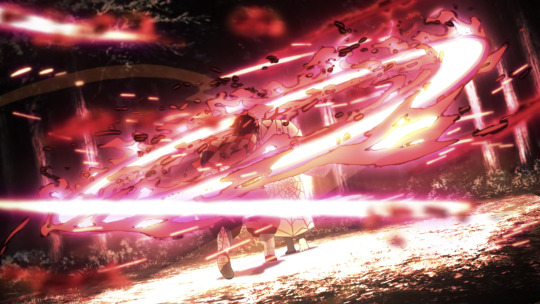
Demon Slayer’s success has also been well documented since the anime finished airing on September 28, 2019. The manga series has broken all records to become the most-sold series for a year, the Mugen Train sequel film is now the highest-grossing film of all time in Japan, and has given Japan the honor of being the third country to have a film reach US $300 million in a single market during its initial run.
Why Does Demon Slayer Resonate With Japanese Audiences?
How Demon Slayer became popular is one thing, but why did this one series, when many others have the same level of talent behind them, become the cultural phenomenon it is today? In December, Oricon released the results of a survey given to Japanese people on how well they know the series, and if so, why did they like it so much.
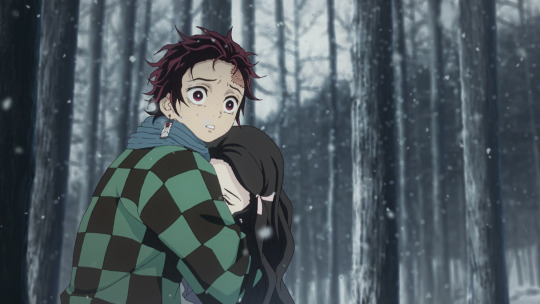
An astonishing 97.6 percent of the 3,848 respondents, who ranged from teens to the elderly, said they knew of the series, with 40.5 percent of people saying they knew it well. Of those who knew the series, they described how they liked the world setting and had sympathy for the characters. A male teenager said that he “was fascinated by the story of the main character growing up while struggling with various difficulties,” while a woman in her sixties enjoyed “the storytelling and LiSA's powerful voice.” A woman in her thirties remarked that she “never thought I'd be talking about anime at my age with my 60-something mother.”
All through the responses, Demon Slayer is bridging the divide between generations, with each generation taking something out of the story that Gotouge has crafted.
The top-notch action scenes and relatable characters draw in the younger crowd, while more middle-aged people get a kick out of the family bonds that weave throughout the story, and the aesthetic of the entire series gives older people a sense of nostalgia, also known as “Taisho romance,” but without it being overly melodramatic about the era. Even kids are going to the schoolyard to reproduce the breathing techniques seen in the series. Japanese Prime Minister Yoshihide Suga joined them when he made a cheeky reference to Demon Slayer’s breathing techniques while speaking to the DIET in November.
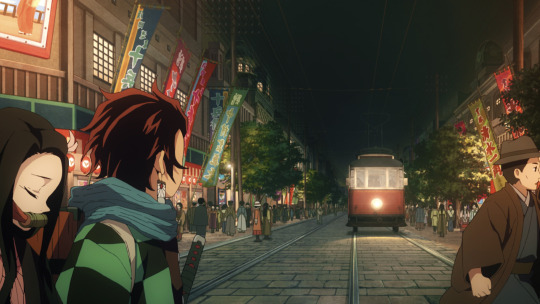
The accumulation of these points has made Demon Slayer a cultural touchstone, one that could only be born out of Japan. Even if the world wasn’t in the current state it is in, the Shonen Jump series would be just as big in its homeland, if not bigger, with more people going to the theaters and traveling to the areas that influenced the series.
Living in Japan at the moment means living in a world surrounded by Demon Slayer. From billboards promoting the film to masks people wear, you can’t go outside (not that people should be!) without having the series in your eyesight. And with how good the series is, and how many people are enjoying it, Demon Slayer: Kimetsu no Yaiba deserves its time in the sun.

Demon Slayer masks being sold in Harajuku in December 2020 (photo: Daryl Harding)

Daryl Harding is a Japan Correspondent for Crunchyroll News. He also runs a YouTube channel about Japan stuff called TheDoctorDazza, tweets at @DoctorDazza, and posts photos of his travels on Instagram.
Do you love writing? Do you love anime? If you have an idea for a features story, pitch it to Crunchyroll Features.
By: Daryl Harding
8 notes
·
View notes